Created by Sporcle
Check out their website for more fascinating quizzes
Follow them on Twitter @sporcle
Like O-Posts on Facebook
You can also follow O-Posts on Twitter @OPosts
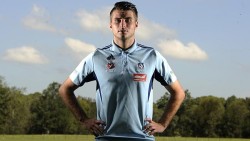
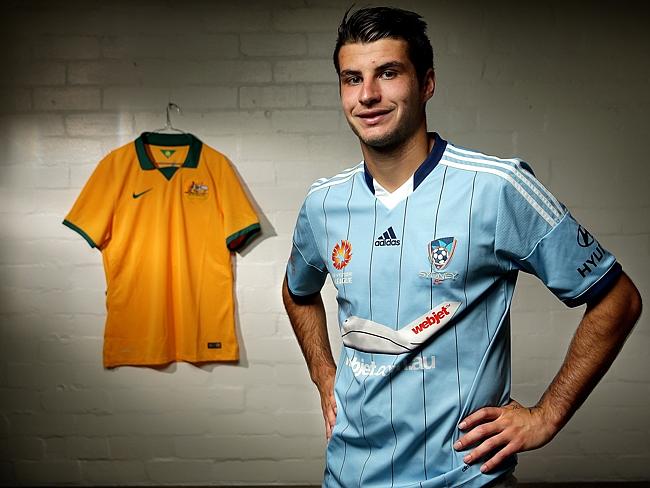
Name: Terry Antonis
Position: Central Midfielder
Age: 21
Country: Australia
Club: Sydney FC
“The guy who kicked Hazard three times in 10 minutes really impressed me. I like it because there are no friendlies. I don’t like the word friendly match. So that young boy in midfield that was really aggressive and playing for a result, impresses me.”
These are the words of Jose Mourinho in the wake of Chelsea’s recently friendly match against Sydney FC. The player who caught his eye? Terry Antonis.
You will find few 21 year-old footballers who have endured as many set-backs in their career as the Australia international has.
His bad luck began at 14 years-old, when a move to Everton broke down because of FIFA’s rules about overseas transfers for players under the age of 18.
Antonis overcame that disappointment to sign a professional contract with Sydney FC in 2010, becoming the club’s youngest ever debutant at 16.
Five years later and much has transpired since, with another failed European move bookmarking a difficult period in the midfielder’s career.
Parma agreed to pay $300,000 for his services back in 2013, only for the Serie A side to bizarrely fail to contact Sydney and confirm the move before the close of the transfer window. No transfer certificate was issued and Antonis again was forced to remain in Australia.
It might be that the Italian club had second thoughts, given Antonis’ previous problems with injuries: long lay-offs have been common in his short career, often scuppering his chances of breaking into the Australian national team.
However, the past two seasons with Sydney FC have highlighted his best qualities: he has developed into one of the club’s biggest assets and was rewarded by Australia coach Ange Postecoglou with a place in the 2015 Asian Cup squad.
Most effective when he plays at the base of midfield, the two-footed Antonis is an effective distributor of the ball, accurate with both long and short passing.
He is particularly adept at transitioning his team from defence to attack, by virtue of his vision and ability to beat markers with short bursts of speed. His natural sense of positioning and movement show maturity beyond his years.
With consecutive seasons of regular football under his belt – and having scored a handful of sumptuous goals along the way – Antonis is beginning to hit top form and overcome the early setbacks that would have derailed a less resilient individual.
Written by Chris Paraskevas
Follow Chris on Twitter @Cparaskevas
Like O-Posts on Facebook
You can also follow O-Posts on Twitter @OPosts
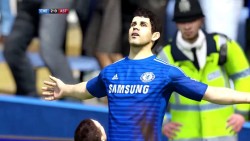

The FIFA season is here. Every Blues’ fan wants to win the PL trophy in FIFA 16 like the club did in reality last term. We are here to help you create a better starting line up so that you can progress in career mode.
Let’s find out the top 10 players who can help you improve your Chelsea line-up.
Oscar - CAM
Overall Rating: 82
Best attribute: Passing
Despite not having a fabulous season, Brazilian Oscar still makes it in Chelsea’s 10 best players list. The youngster has an overall of 82 which is a downgrade from FIFA 15’s 84 rating.
Cesar Azpilicueta -LB
Overall Rating: 83
Best attribute: Pace
Azpilicueta was one of the best left backs in the Premier League last year. EA sports added +1 in his overalls as a winter upgrade and now in FIFA 16 there has been an additional +3 in his overall stats.
Willian - RM
Overall Rating: 83
Best attribute: Pace
Willian is only right midfielder who has earned a gold card in FUT. He is a beast while attacking and also helps the team while defending. He is worthy of getting an 83 rating.
John Terry - CB
Overall Rating: 83
Best attribute: Defending
The veteran defender has once again showed his true potential the previous season. He not only made brilliant tackles, but also scored a bunch of goals to lift the Premier League trophy yet again as captain.
Nemanja Matic - CDM
Overall Rating: 84
Best attribute: Physical
Matic is the reason Chelsea has a balanced side. The defensive midfielder was in control of both attack and defence as Jose Mourinho played him as a bishop to win yet another trophy with Chelsea.
Cesc Fabregas - CM
Overall Rating: 85
Best attribute: Passing
Fabregas had the most number of assists in the Premier League last year. But unfortunately, he has a downgraded overall stat in FIFA 16. His 86 rated FUT card in FIFA 15 is now rated at 85.
Thibaut Courtois - GK
Overall Rating: 87
Best attribute: Reflexes
The Belgian goal stopper is certainly one of the best goalkeepers in the world. Competing against Manchester United’s David De Gea, Courtois showed why he’s among the best making more than 70 saves all season. He has a massive upgrade of +3
Diego Costa - ST
Overall Rating: 87
Best attribute: Shooting
The Brazil-born striker scored the most goals for Chelsea last term. He was one of the most successful attackers in Europe last year, which sees his stats in FIFA 16 take a hike.
Radamel Falcao - ST
Overall Rating: 88
Best attribute: Shooting
Falcao had a poor loan spell at Manchester United last season, but he still holds a ridiculous amount of thirst for scoring goals. This might be why EA Sports has not downgraded the player.
Eden Hazard - LM
Overall Rating: 89
Best attribute: Dribbling
Hazard won the Premier League Player of the Year as well as the PL trophy for the team. He was the best left winger in Europe after Ronaldo last season, which is why he is only 3 overalls lower than last year’s FIFA Player of the Year winner.
Written by Charchit Dahal
Follow Charchit on Twitter @CharchitDahal
Like O-Posts on Facebook
You can also follow O-Posts on Twitter @OPosts
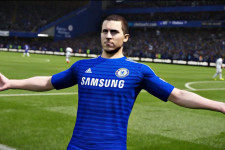
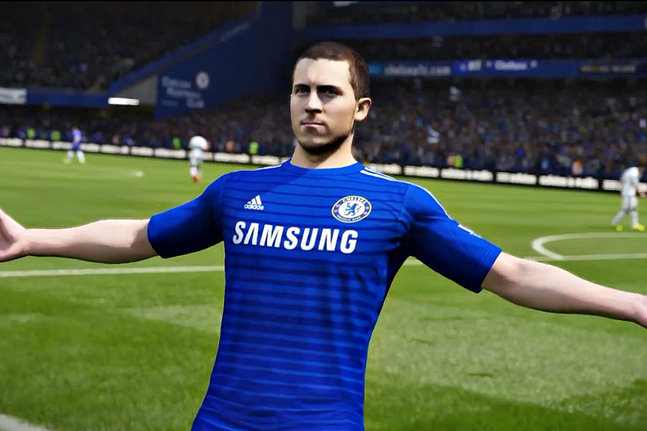
HEADS UP: The list is in ascending order.
Are you looking for a young but powerful player to add to your team? If so, then we have a list of the ten highest rated young players (under the age of 25) for you to choose from.
David Alaba – Bayern Munich
Overall Rating: 84
Best attribute: 87 rating in Pace
Alaba is just 23, but has managed to become one of the best in his position in the world. The left back has won almost everything with Bayern Munich. He progressed a lot last year, which is reflected in FIFA 16 as he is rated 84.
Christian Eriksen - Tottenham
Overall Rating: 84
Best attribute: 88 rating in Passing
Eriksen is one of the best ball passers in FIFA 16. With 9 assists, he was one of the most influential player in Spurs’ squad last year. The Dane, also aged 23, has a potential of 87, which makes him the best Tottenham player in FIFA 16.
Antoine Griezmann - Atlético Madrid
Overall Rating: 84
Best attribute: 87 rating in Pace and Dribbling
Griezmann was one of the finest midfielders in La Liga last season. He scored more than 20 goals and assisted a ton. He has awesome stats in Dribbling and Pace making him suitable for a fast game play.
Isco – Real Madrid
Overall Rating: 85
Best attribute: 89 rating in Dribbling
The Real Madrid midfielder was brilliant for the Los Blancos when their top midfielders were out injured. He played an outstanding role to cover up their void that he could possible grab a starting role next season. His performance has also increased his FIFA stats from 83 to 85.
Paul Pogba - Juventus
Overall Rating: 86
Best attribute: 89 rating in Physical
Pogba is probably one of few bright midfielders who of which we are sure that they will grow into a great player. His constant improvement each season has seen him become close to among the best in the game. In his FIFA career however, he has almost doubled his stats having started at 47 in FIFA 11.
Mario Gotze – Bayern Munich
Overall Rating: 86
Best attribute: 91 rating in Dribbling
Gotze has always been lucky. He scored the last minute World Cup final goal, he moved to Bayern Munich in just the right time to win the treble, and he has an almost constant rating in FIFA series for three years. With 91 rating in Dribbling, the German midfielder is among one of the most expensive in FUT 16.
James Rodriguez – Real Madrid
Overall Rating: 87
Best attribute: 86 rating in Passing and Dribbling
After his brilliant World Cup performance, EA sports increased his 85 rating to 88 in FIFA 15. In the latest version he has an 87 rating because he was out injured most of the season. He however has a lot more potential than he had in FIFA 15.
Thibaut Courtois – Chelsea
Overall Rating: 87
Best attribute: 90 rating in Reflexes
The Chelsea goal stopper has managed to kick Cech out of the club because of his game changing goalkeeping. He helped his side win the Premier League this season making him one of the best players in the Premier League last season. His FIFA stats has boosted from 84 to 87 with a potential rating of 89.
Neymar - Barcelona
Overall Rating: 89
Best attribute: 93 rating in Dribbling
The former Santos’ attacker won the treble with Barcelona this year. He was very influential as he managed to score more than 20 goals. He will be one of the best attackers in FIFA 16 who is going to be sold probably hundreds of thousands of times.
Eden Hazard - Chelsea
Overall Rating: 89
Best attribute: 94 rating in Dribbling
Finally, the best young player in FIFA 16 is Eden Hazard. The Chelsea winger was at his absolute best last year for the Blues winning the Premier League and Capital One Cup. His FIFA stats has boosted from 86 to 89 making him one of the best in the game. Because he is young and dynamic, he will likely be the most sold player in FUT 16.
Written by Charchit Dahal
Follow Charchit on Twitter @CharchitDahal
Like O-Posts on Facebook
You can also follow O-Posts on Twitter @OPosts
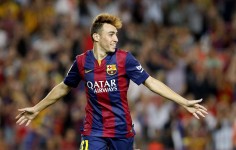
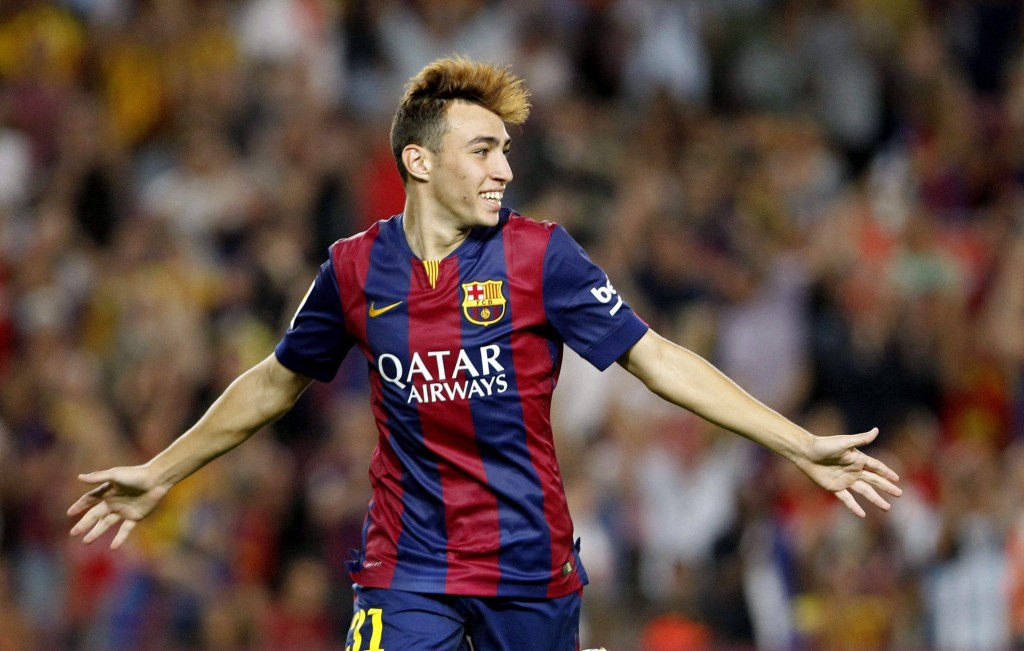
For the second summer in succession, one of Barcelona’s most promising young talents is being linked with a move away from the club. If reports are to be believed, Munir El-Haddadi is a target for many top European clubs including Arsenal and Chelsea with the Gunners supposedly in pole position for his signature.
Many football fans may not be too familiar with the player known simply as Munir; after all, he only made his debut for the Blaugrana B team in March 2014 and has only made ten senior league appearances since then. So what is all the fuss about? Why are so many teams interested in the youngster and would the Catalonians be willing to sell?
Munir was born to parents of Moroccan origin and raised in a small town northwest of the Spanish capital. As a child, his favourite team was Real Madrid. His prolific goal scoring record as a youngster eventually secured him a place in the youth ranks of Atletico Madrid at which point he ditched any previous allegiances. Aged just 15, he was sent on loan to CF Rayo Majadahonda where he bagged an incredible 30 goals in 29 matches in the Tercera División.
His record in the Spanish fourth tier drew attention from his boyhood team across the city, but it was Barcelona who made the only firm approach for his services. After just a year at Atletico, Munir was on the books at the Catalan club and made his debut at youth level.
His style of play and ability to score goals soon attracted lazy comparisons to other top players including Lionel Messi. At UEFA youth league level, Munir averaged a goal a game for Barca and was voted the outstanding player in 2013-14. During a game against Benfica in July 2014, he became a social media hit after scoring from the halfway line.
His performances prompted new coach Luis Enrique to give the youngster first team opportunities during the 2014-15 season. He made an instant impact by scoring on his debut in the 3-0 win against Elche at the Camp Nou and made a further nine appearances in the league. He also featured six times in the Copa del Rey and Champions League campaigns.
With Pedro’s future in doubt, it seems crazy that the Catalan club would sell a player with such talent and potential. Any new players that Luis Enrique recruits this summer will not be able to play until January and as a result, Munir will be a valuable asset to the squad in the coming months. The coach has also expressed his intention to continue developing the player so if he does move, a loan would be most likely.
In the unlikely event that a permanent transfer does occur, Arsenal would be the most likely destination. Arsene Wenger has previously taken Barca youth players Jon Toral and Hector Bellerin to the Emirates and of course Cesc Fabregas made the same move eleven years ago.
The one thing that is certain is that Munir has a big future ahead of him and wherever he ends up; he is set to be a star.
Written by Neil Morris
Follow Neil on Twitter @nmorris01
Like O-Posts on Facebook
You can also follow O-Posts on Twitter @OPosts
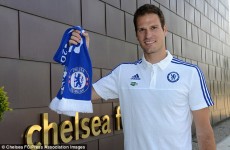
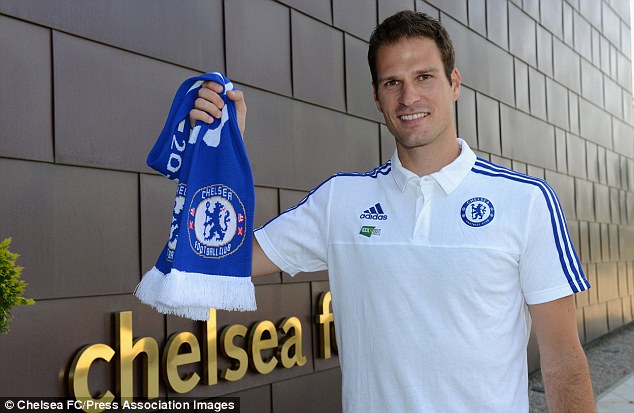
Asmir Begovic has ditched Staffordshire-based Stoke City and moved into the big city and give himself a massive challenge – to fight for a first team place against one of the most coveted young goalkeepers in the world, Thibaut Courtois.
Begovic started his career off at Portsmouth, he was farmed out several times wanting first team football during his time at the club – but when the Bosnian and Herzegovina international joined Stoke 5 years ago, and it would have been hard to see him joining a club within the top four.
The growth and development of Begovic is impressive. His shot stopping, positioning and composure have all improved during his time at Stoke and ultimately will go on to help Chelsea in the several competitions they’re participating in throughout the year.
Depth is important for Jose Mourinho this season, as was evident in the signings he made last season – but even more so with the signings he has already made. Falcao for example, seemingly a replacement for Didier Drogba, may have had a bad season but is still a player of undoubted quality.
Begovic is just another part of that. Mourinho is ambitious and likes to spend money, and he is at the perfect club to do just that. Mourinho wouldn’t admit it but he is setting his squad up for a massive season, to try and compete for not just one trophy but two or maybe even three.
With an abundance of Premier League experience and a goal to his name, Asmir Begovic shouldn’t have any problems fitting in to life at Chelsea Football Club, and for a modest fee of £8m it should see a nice healthy profit after the sale of Petr Cech in the goalkeeping department this season.
Champions League experience is what Begovic would have joined Chelsea for, to prove himself on the big stage, and there is no doubt he has the quality to live up to that standard.
Written by James Clark
Follow James on Twitter @JamesMRClark
Please like O-Posts on Facebook
You can follow O-Posts on Twitter @OPosts

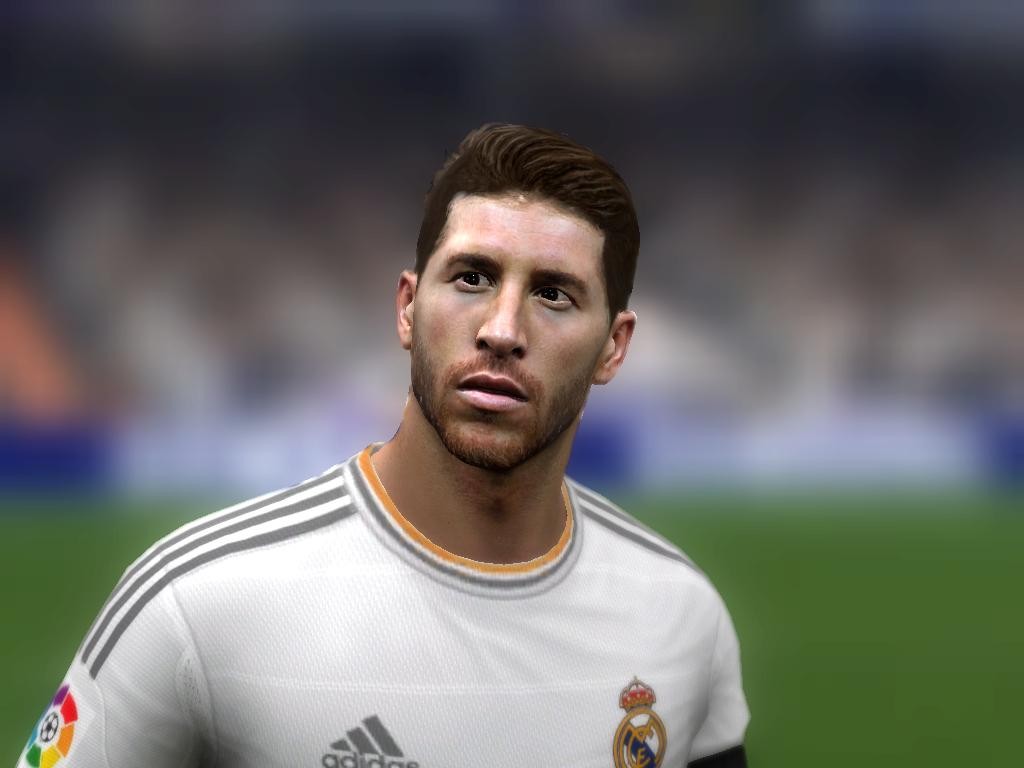
FYI: 1 is Lowest, 10 is the highest
Defenders in FIFA 16 or any other video game simulation are very vital to your team’s overall performance in the game.
We have listed a bunch of top defenders in FIFA 16 so that you can improve your team and therefore your performance.
1. John Terry
Overall Rating: 83
Best attribute: 84 in Defending
The veteran captain has had very consistent overall ratings in FIFA games. For three years in a row, his rating has been 83.
He is one of the best defenders in England and is very famous among English gamers.
2. Nicolás Otamendi
Overall Rating: 83
Best attribute: 87 in Defending
Otamendi was one of the most consistent defenders in La Liga this season. Because of his form, Manchester United and a few other English sides are keeping a close eye on him.
A move to the Premier League would make this brilliant defender very popular in FUT 16.
3. Mehdi Benatia
Overall Rating: 85
Best attribute: 89 in Defending
The Morocco international was brilliant for Bayern Munich this season making some crucial defending in the back.
The boost in his FIFA stats is going to make him popular this year.
4. Vincent Komapny
Overall Rating: 85
Best attribute: 87 in Defending and Physical
Kompany has insane defending and physical stats in FIFA 16 making him one of the powerful player to have in your team.
He is also good with headers, which is why most FUT players would want him in their team as he can prove to be a threat in set-piece situations.
5. Jerome Boateng
Overall Rating: 85
Best attribute: 86 rating in Defending
Boateng was one of the most successful defenders in the 2014-15 season. He made some game changing tackles and stops to make a name for himself.
He is going to be famous in the latest version of FIFA as his stats have significantly improved.
6. Diego Godin
Overall Rating: 85
Best attribute: 88 in Defending
Degio Godin had a really successful season with Atlético Madrid which has resulted in a boost in his ratings in FIFA 16. He previously had a rating of 83.
7. Gerard Pique
Overall Rating: 86
Best attribute: 88 rating in Defending
Pique’s rating in FIFA 16 has declined from FIFA 15, despite an excellent season for Barcelona this year.
With a potential of 88, he is going to be popular among Spanish players.
8. Mat Hummels
Overall Rating: 86
Best attribute: 87 rating in Defending
World Cup winner for Germany, Hummels did not quite have a great season with his club. He conceded a lot of goals and made some silly mistakes.
But despite that, he has an 86 rating in FIFA 16.
9. Sergio Ramos
Overall Rating: 87
Best attribute: 88 rating in Defending
The Spanish centre back is one of the best defender in La Liga. He had such a good record last year that Manchester United want to sign him.
Ramos is already famous among FIFA gamers, but a move to Manchester United could make him even more popular.
10. Thiago Silva
Overall Rating: 88
Best attribute: 90 rating in Defending
Thiago Silva is the best defender in FIFA 16. The PSG defender did not have the best season last term, but he still has all the required attributes to make him the best.
He was the most traded player in FIFA 15 FUT and it would not be a surprise if he is once again.
Written by Charchit Dahal
Follow Charchit on Twitter @CharchitDahal
Like O-Posts on Facebook
You can also follow O-Posts on Twitter @OPosts

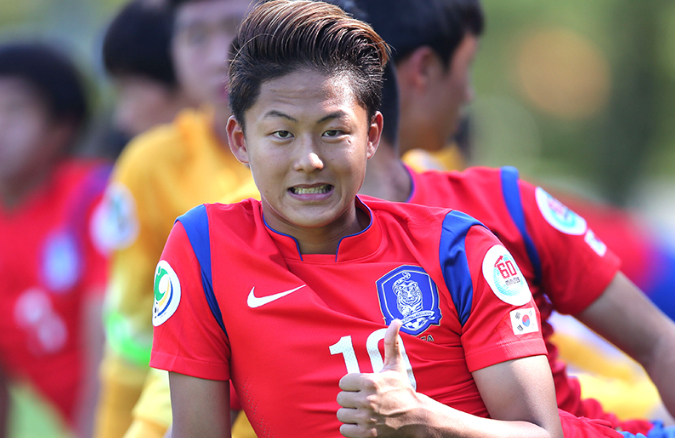
In early July, Lee Seung-Woo was promoted to Barcelona’s B-side, along with his compatriot Paik Seung-Ho.
Dubbed ‘The Korean Messi’, Lee has the footballing hopes of an entire nation on his shoulders, as they hope that he can grow up to be the world-class creative talent that Korea has so far struggled to produce.
Lee’s transfer to Barcelona in 2011 broke FIFA rules, and was one of the reasons behind Barcelona’s recent transfer embargo. Unfortunately for Lee, it has also meant that he is banned from playing competitively for Barcelona until his eighteenth birthday in January 2016.
He would however be able to play competitively if he were sold to a different club, leading to speculation in the past that he might join Liverpool, Chelsea, or even Barca’s biggest rivals Real Madrid, although a transfer now looks unlikely.
Despite not being able to play competitively for his club, he has been able to play for his country, representing them at various youth levels.
His most impressive performance was at the AFC Under-16 championships in Thailand where he scored five goals, including one where he dribbled the ball half the length of the pitch before scoring against Japan, and won player-of-the-tournament as South Korea reached the final where they lost to North Korea.
He made his debut for the Under-18’s in the Suwon JS Cup in May this year. However, he was unable to have as much of an impact at this level than he has at previous levels, and it was his Barcelona team-mate Paik Seung-Ho who impressed the critics with his passing ability instead.
Lee’s quiet performance suggests that he still has a long way to go before he is ready for the Barcelona first team, and his ban on playing competitively may slow down his progress.
But while some footballing prodigies such as Freddy Adu never quite make it at the highest level, footballing experts generally agree that Lee Seung-Woo has the potential to become a world-class player in the future.
Written by Steven Price
Check out more of his work on everything South Korean football at the excellent K-League Footy
Follow his website on Twitter @Kleaguefootball
Like O-Posts on Facebook
You can also follow O-Posts on Twitter @OPosts